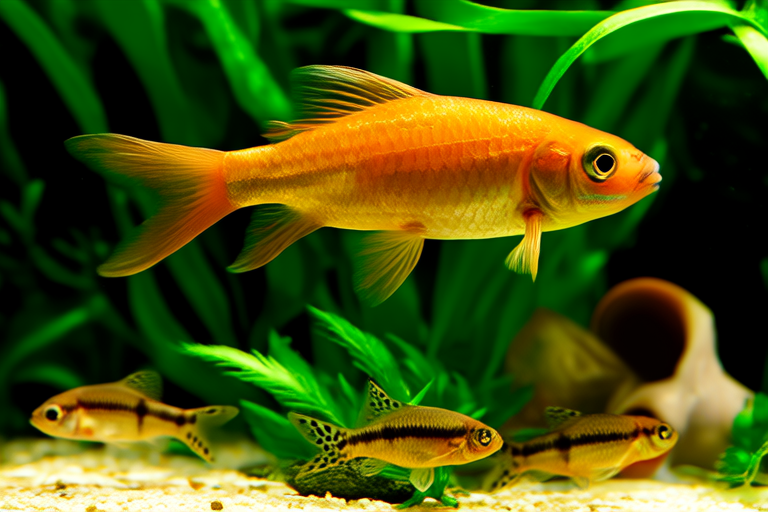From Tiny Fry to Stunning Adult: Raising Goldfish Successfully
Introduction to Goldfish Care
Welcome to the fascinating world of goldfish! These charming creatures have been a beloved part of aquatic life for centuries. Whether you’re a seasoned aquarist or a novice, raising goldfish can be an incredibly rewarding experience. Goldfish come in various breeds, each with unique colors and fin shapes. Before diving into the specifics of goldfish care, it’s important to understand that goldfish are cold-water fish and require specific environmental conditions to thrive.
Setting Up the Perfect Tank Environment
The first step in successfully raising goldfish is creating the ideal tank environment. The size of your tank will depend on the number and type of goldfish you plan to keep. A general rule of thumb is to provide at least 20 gallons of water per goldfish. A larger tank offers more stability in terms of water chemistry and temperature, which is crucial for their well-being.
Goldfish are messy eaters and produce a lot of waste, so a powerful filtration system is essential. Choose a filter that provides at least four to six times the volume of the tank in turnover per hour. Additionally, ensure there is ample space for swimming, as goldfish are active swimmers.
Proper lighting is also important. While goldfish don’t need constant light, providing a regular day-night cycle helps maintain their circadian rhythms. Install a timer to automate the lighting schedule, typically 8 to 12 hours of light per day.
Breeding Goldfish and Caring for Fry
Breeding goldfish can be an exciting endeavor. To encourage spawning, create a suitable environment by ensuring optimal water conditions and providing a varied diet rich in protein. Select healthy adult goldfish, ideally between one and two years old, for breeding. Place them in a separate breeding tank to avoid disturbing other fish.
Goldfish lay eggs, which attach to plants or breeding mops. Once the eggs hatch, tiny fry emerge. Fry are extremely delicate and require special care. Start by feeding them infusoria or commercially available fry food. As they grow, introduce baby brine shrimp and finely ground flake foods.

Keep the fry tank clean and well-oxygenated. Frequent partial water changes help maintain water quality. Gradually introduce the fry to the main tank once they reach a size where they can fend for themselves.
Common Health Issues and Solutions
Like any pet, goldfish can fall ill. Common ailments include fin rot, ich (white spot disease), and swim bladder disorders. Fin rot is often caused by poor water quality and manifests as frayed or discolored fins. Ich appears as small white spots on the body and fins and is usually due to sudden changes in water temperature. Swim bladder disorders result in buoyancy problems and can be caused by overfeeding or constipation.
To prevent these issues, maintain excellent water quality through regular testing and water changes. Quarantine new fish before introducing them to the main tank to avoid the spread of diseases. If your goldfish show signs of illness, consult a veterinarian specializing in aquatic animals for proper diagnosis and treatment.
Diet and Nutrition Throughout Different Life Stages
Proper nutrition is key to raising healthy goldfish. Young fry require high-protein diets to support rapid growth. Infusoria and commercial fry food are excellent choices. As they mature, introduce baby brine shrimp and finely ground flake foods.
Adult goldfish benefit from a balanced diet consisting of high-quality flake, pellet, and frozen foods. Offer a variety of vegetables like peas, spinach, and zucchini to ensure a well-rounded diet. Avoid overfeeding; uneaten food can pollute the water. Feed your goldfish small amounts two to three times daily, removing any uneaten food after five minutes.
Maintaining Water Quality
Water quality is paramount for goldfish health. Regularly test the water parameters, including ammonia, nitrite, nitrate, pH, and hardness. Aim for ammonia and nitrite levels at zero, nitrate below 40 ppm, pH between 6.5 and 7.5, and hardness within the range of 5 to 15 dGH.
Perform weekly water changes of about 25% to remove accumulated toxins and replenish beneficial minerals. Use a dechlorinator when changing water to neutralize harmful chemicals. Consider installing a UV sterilizer to reduce algae and bacteria levels, enhancing water clarity.
Tips for Transitioning Fry into Adults
As fry transition into adulthood, monitor their growth closely. Ensure they have enough space to swim freely and avoid overcrowding. Gradually increase the size of their tank or introduce them to the main tank when they reach a suitable size.
Introduce adult goldfish to the tank carefully. Acclimate them by floating the bag in the tank for 15 to 20 minutes, then slowly adding tank water to the bag. This process allows them to adjust to the new environment gradually.
Provide hiding spots and decorations to minimize stress during this transition. Ensure the tank is stable and free from potential hazards. With patience and care, your fry will grow into stunning adult goldfish.
Raising goldfish from tiny fry to stunning adults requires dedication and attention to detail. By understanding their needs and providing a nurturing environment, you can enjoy the beauty and companionship of these delightful creatures. Happy fishkeeping!
